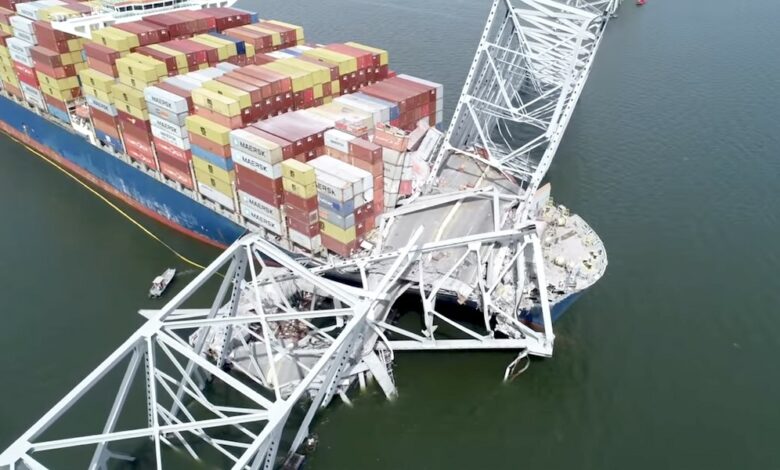Dali owner hires lobbyists in Washington to quash changes to America’s Limitation on Liability Act of 1851

Concerned about the immense scale of damage claims coming its way, the owner of this year’s most infamous ship has hired lobbyists in Washington to try and ensure American politicians do not tinker with the country’s liability laws.
Citing federal lobbying records, the Baltimore Sun is reporting that Grace Ocean, the Singapore-based owners of the Dali containership, have hired Blank Rome Government Relations to lobby to make sure there are no changes to the Limitation on Liability Act of 1851.
Ahead of what will be years of legal wrangling, the owner and manager of the Dali have sought to limit potential pay-outs from March 26’s Baltimore bridge allision, which killed six road maintenance workers and brought operations at the port largely to a standstill.
Grace Ocean and shipmanager Synergy Marine filed a limitation of liability court petition on April 1 seeking to cap their liability to just $43.6m, in a case that overall is expected to see pay-outs in the billions of dollars.
The National Transportation Safety Board (NTSB), which released a preliminary report last month, is investigating what caused Dali to lose power, then strike and topple the bridge. The FBI has opened a criminal investigation.
The vessel, on charter to Maersk, experienced electrical blackouts about 10 hours before leaving the Port of Baltimore and again shortly before it slammed into the Francis Key Bridge, according to the NTSB’s preliminary report.
The first power outage occurred after a crewmember mistakenly closed an exhaust damper while conducting maintenance, causing one of the ship’s diesel engines to stall, investigators said. Shortly after leaving Baltimore, the ship crashed into one of the bridge’s supporting columns because another power outage, clearly captured in video footage, caused it to lose steering and propulsion.
The board said the fatal outage came about four minutes before the crash when electrical breakers unexpectedly tripped causing a loss of power to all shipboard lighting and most equipment when it was 1 km from the bridge.
The Dali crew restored power, but another blackout occurred about 320 m from the bridge, which stopped all three steering pumps. The crew was unable to move the rudder to steer.
Plans are being drawn up to get a replacement bridge up and running by 2028, while insurers have warned the Dali accident could be one of the largest marine claims in history.
After an extensive salvage operation, the port is expected to open its full main shipping channel this weekend.

What about The National Transportation Safety Board (NTSB) investigating into rules governing bridge transits imposed by shore authorities, let’s say USCG, Port Authority, Harbour Master, Senior Pilots Association, Tugs Association, etc. in addition to electrical blackouts and power outage also occurred frequently in shore side installations, being restored after hours sometimes?